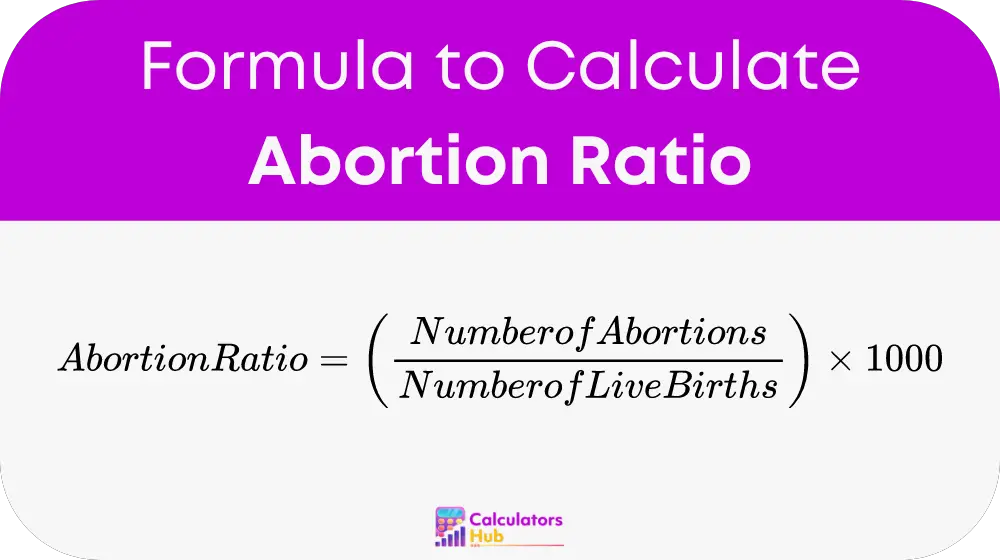The Abortion Ratio Calculator helps to determine the ratio of abortions to live births within a given time period. This tool is essential for public health officials, researchers, and policymakers to understand trends in reproductive health and make informed decisions based on accurate data.
Formula of Abortion Ratio Calculator
The formula for calculating the Abortion Ratio is:

Where:
- Number of Abortions is the total number of abortions in a given time period.
- Number of Live Births is the total number of live births in the same time period.
Pre-calculated Abortion Ratios
| Number of Abortions | Number of Live Births | Abortion Ratio |
|---|---|---|
| 50 | 1000 | 50 |
| 100 | 1000 | 100 |
| 150 | 1000 | 150 |
| 200 | 1000 | 200 |
| 250 | 1000 | 250 |
Example of Abortion Ratio Calculator
To make concepts more clear let us look at an example. Let's calculate the Abortion Ratio using the following data:
- Number of Abortions: 120
- Number of Live Births: 3000
Using the formula:
Abortion Ratio = (120 / 3000) * 1000 = 40
So, the Abortion Ratio is 40.
Most Common FAQs
The Abortion Ratio is important because it provides insights into reproductive health trends. It helps public health officials and policymakers understand the prevalence of abortions relative to live births, which can influence health policies and resource allocation.
Data for the Abortion Ratio is typically collected from healthcare providers, public health records, and national health surveys. Accurate data collection is essential for reliable calculations and informed decision-making.
Yes, the Abortion Ratio can vary significantly by region due to differences in healthcare access, cultural attitudes, legal regulations, and socioeconomic factors. Understanding regional variations is crucial for targeted health interventions.